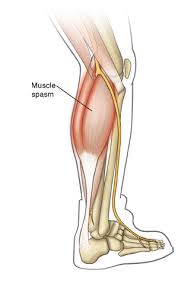Introduction:
Leg muscle spasms, commonly known as cramps, can be a distressing and uncomfortable experience. In this blog post, we will delve into the causes, symptoms, and effective strategies to manage and prevent leg muscle spasms.
Causes of Leg Muscle Spasms:
1. Dehydration: Insufficient fluid intake can lead to electrolyte imbalances, triggering muscle spasms.
2. Overexertion: Intense physical activity, especially without proper warm-up or conditioning, may strain muscles and result in spasms.
3. Mineral Deficiency: Low levels of minerals like potassium, calcium, and magnesium can contribute to muscle cramps.
4. Nerve Compression: Pressure on nerves due to conditions like herniated discs or tight muscles can lead to spasms.
Symptoms:
Leg muscle spasms are characterized by sudden, involuntary contractions that can range from mild to severe. They often cause pain, stiffness, and a visible tightening of the affected muscle.
Preventive Measures:
1. Stay Hydrated: Ensure an adequate intake of water and electrolytes, especially during physical activity.
2. Stretching Exercises: Incorporate regular stretching routines to improve flexibility and reduce the risk of muscle cramps.
3. Balanced Diet: Consume a diet rich in minerals, including potassium, calcium, and magnesium, to support muscle function.
4. Proper Footwear: Wear comfortable and supportive footwear, especially during exercise, to minimize strain on leg muscles.
5. Gradual Exercise Progression: Gradually increase the intensity and duration of your workouts to give muscles time to adapt.
Management Strategies:
1. Immediate Stretching: Gently stretch the affected muscle to alleviate the spasm. Hold the stretch for 15-30 seconds.
2. Massage: Apply firm but gentle pressure to the cramped muscle or use a foam roller to release tension.
3. Heat or Cold Therapy: Applying heat or cold packs to the affected area can help relax muscles and reduce pain.
4. OTC Pain Relievers: Over-the-counter pain medications may provide relief, but consult a healthcare professional for appropriate recommendations.
When to Seek Medical Attention:
If leg muscle spasms persist, worsen, or occur frequently, it’s crucial to consult a healthcare professional. Persistent spasms could be a sign of an underlying medical condition that requires attention.
Conclusion:
Leg muscle spasms are a common issue, but with proper prevention and management strategies, you can minimize their impact on your daily life. Remember to stay hydrated, maintain a balanced diet, and incorporate stretching exercises into your routine for optimal muscle health. If problems persist, seek guidance from a healthcare professional to address any underlying issues.

